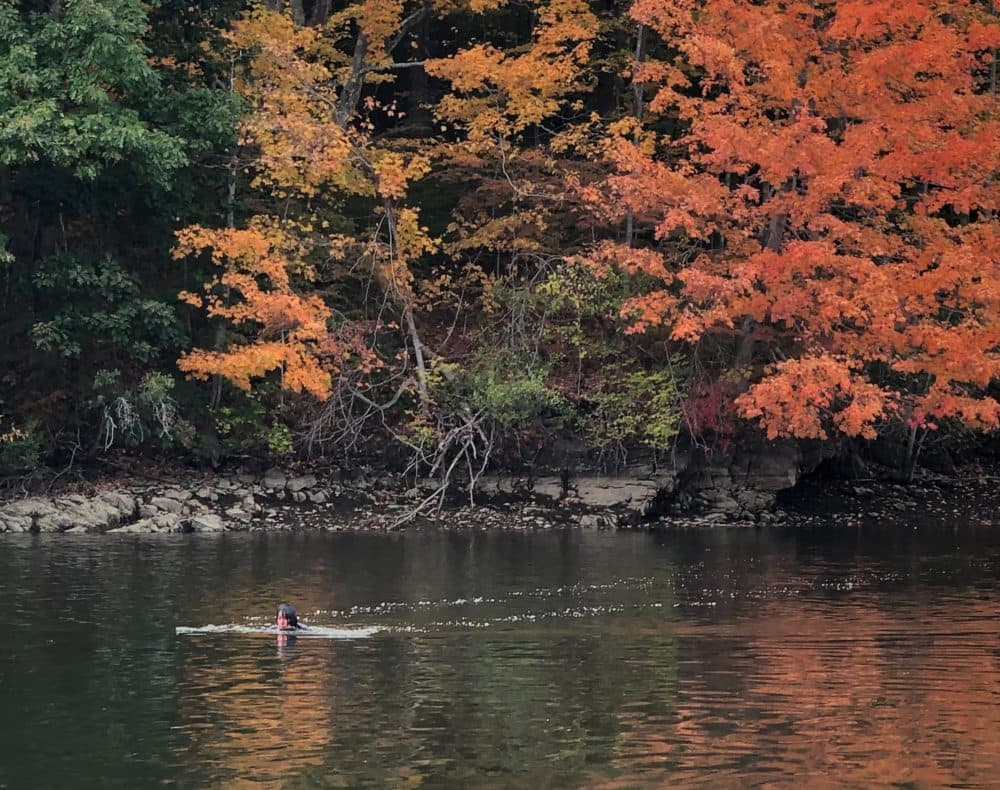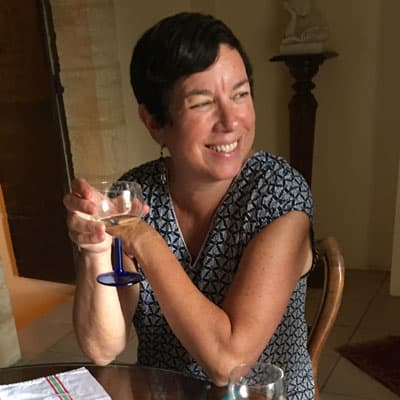Advertisement
Commentary
In The Water, The World Falls Away

One hundred and eighty-two days. That’s how long I went without swimming during this never-ending pandemic.
My last swim before the big COVID-19 surge last year winter was October 20, 2020, in the Salmon Falls River in my hometown in southern Maine. I swam quickly (frantically) from a little pebbly beach, across the brackish brown water, to New Hampshire and back.
Somewhere on the return from New Hampshire, when my toes froze and tingled with the cold, I knew it was my last outdoor swim of the season. Little did I know I wouldn’t swim again until April 20th, 2021, on the first almost warm day, when I plunged into a nearby pond for a quick dunk. For most, not being able to swim for 182 days is not a big deal. But for me, it felt like going without air.
During a normal winter, I swim laps at the local indoor pool several days a week. Or I visit my daughters, who live in California, and seek out outdoor pools. But last year, I didn’t feel safe in indoor pools — and traveling wasn’t an option.
During the spring, summer and early fall, I dive into any body of water that calls out to me. Rivers, ponds, lakes, oceans, creeks, pools. I breast stroked across the Hudson River from Newburgh, New York, to Beacon, New York. I swam in the icy, numb-chilling waters by the Isles of Shoals, a series of small islands off the coast of Portsmouth, New Hampshire. I’ve even traveled to Iceland in January to swim in geothermally-heated swimming pools in snow storm after snow storm.
I swim until I feel something shift, something that can only be described as an out-of-head experience.
Last month, on a humid August afternoon, I was driving on a country back road with a girlfriend. I spotted a clear lake out of the corner of my eye. “Pull over,” I yelled. “What’s wrong?” she asked. “Over there, I see water! That looks like a perfect place to swim.”
“You are fearless,” my friend told me.
We both laughed, but I didn’t respond to her comment about my “fearlessness.” The truth is, I’ve never thought of myself as fearless. Not even close. I grew up with parents who always expected the worst that could happen would happen. Whenever something bad occurs — storms, health scares, pandemics — I’m the person who worries the most. I’m never the one who says everything will be fine.
I couldn’t stop thinking about my friend’s comment, until I finally realized that, for me, swimming is about overcoming fear — not denying its existence. Being submerged in water is all about letting go of the worries that await, and often consume me, on shore.
Advertisement
People often ask how far I swim every day. I don’t know; I don’t clock my swims by distance. I’m after something else, something other than the number of laps or miles. I swim until I feel something shift, something that can only be described as an out-of-head experience. I swim until my thoughts quiet down, and I’m in a new place.

I always start with the breast stroke, then after a while, I switch to the crawl before flipping over onto my back. It takes a while to find my groove — and it almost always depends on how many worries I bring with me into the water.
I don’t like the feeling of goggles tight on my eyes, so I swim with my eyes closed. When I first start a swim I often count strokes. It’s like a meditation that takes me into the swim: one, two, three, four. And then the counting stops because something else has taken over, a new type of meditation.
I stop thinking the way I do on land. The lists that run through my mind disappear. My worries about the political landscape, climate change, my daughters, the delta variant, the next wave of pandemic, seem to vaporize. I stop grinding my teeth in anger thinking about the people who refuse to get vaccinated for all their myriad reasons. I forget the notion that if the pandemic continues to rage, I may have to go another 182 days without the freedom of being inside a body of water.
Inside. That’s what it feels like.
The other day I was swimming in a local lake and after about 20 minutes I stopped stroking and was jolted into the kind of feeling you get when you wake up quickly from a deep nap. Startled. Unsure of your surroundings. Off-balance, but not necessarily in a bad way. I’d lost track of time and space. I stopped swimming and looked around, at the pine trees and the soft marshy green grass along the lake’s edge. The quiet beauty of it all.
This feeling of being jolted morphs into pleasure. Endorphins kick in. I’ve heard joggers talk about this moment in their daily run when they hit a high, and feel like they could keep moving forever.
This newest wave of the pandemic may cut my swimming season short. I still don’t feel particularly “safe” swimming indoors with lots of strangers. So, I’ll swim every day until the water is too cold, just short of painful. (I have explored wet suits to extend the season, but I feel trapped inside all that neoprene.)
For now, I’ll keep my mask on and try to keep my worries above water.
